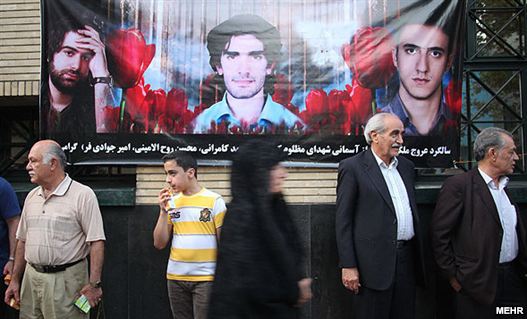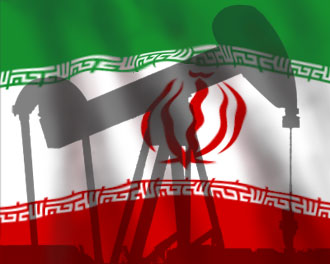 A Memorial to 3 Who Died at Kahrizak“Kahrizak” ---- Although familiar to locals, the word was only elevated to heights of infamy, in the most bitter, painful and tragic ways, in the disputed 2009 Presidential election. The public --- both domestic and foreign --- learned about a place called Kahrizak Prison, a detention centre where those protesting the election results were subject to mistreatment, beatings, abuse, torture, and, in some cases, death.
A Memorial to 3 Who Died at Kahrizak“Kahrizak” ---- Although familiar to locals, the word was only elevated to heights of infamy, in the most bitter, painful and tragic ways, in the disputed 2009 Presidential election. The public --- both domestic and foreign --- learned about a place called Kahrizak Prison, a detention centre where those protesting the election results were subject to mistreatment, beatings, abuse, torture, and, in some cases, death.
Kahrizak is located on the south side of Shahr Ray, a small town south of Tehran. Under a plan introduced in 2004, with the pretext of “collecting the gangs and thugs”, the Islamic Republic’s security forces began using Kahrizak as a holding place for those arrested. Shortly afterward, scores of journalists, human rights activists, and the Prisoners Rights Defense Committee (PRDC) began objecting to the mistreatment of the detaineds. The journalist and human rights activist, Shiva Nazar Ahari, and PRDC member Mehdi Mahmoudian were among the activists raising public awareness about the dire conditions.
But the efforts of Mahmoudian and other journalists and human rights activists fell short of drawing local or foreign attention to the real magnitude of the catastrophe. Many of those protesting the 2009 election were transferred to Kahrizak where, according to eyewitnesses, they ended up in groups of 30-40 shoved inside containers with a maximum capacity of 10 people. The detainees were kept in the worst possible physical and sanitary conditions, in the scorching summer heat, inside these containers. They were repeatedly tortured. Many of them, according to other prisoners and former officials, were raped.
This is why the word Kahrizak is now intertwined with and reminiscent of several people’s names: from those in charge of this prison, to those beating and torturing the prisoners, to the whistleblowers of the place, and finally to the victims of the unspeakably brutal violence inflicted in the centre.
Click to read more ...
 1915 GMT: Economy Watch (Zionist Edition). Looks like Iran's problems with domestic production and rising prices have opened up unexpected imports --- the head of the Tehran Association of Fruit and Vegetable Sellers says cherries from Israel sre available in Iran for $3 per kilogramme.
1915 GMT: Economy Watch (Zionist Edition). Looks like Iran's problems with domestic production and rising prices have opened up unexpected imports --- the head of the Tehran Association of Fruit and Vegetable Sellers says cherries from Israel sre available in Iran for $3 per kilogramme.
 Saturday, June 23, 2012 at 17:13
Saturday, June 23, 2012 at 17:13